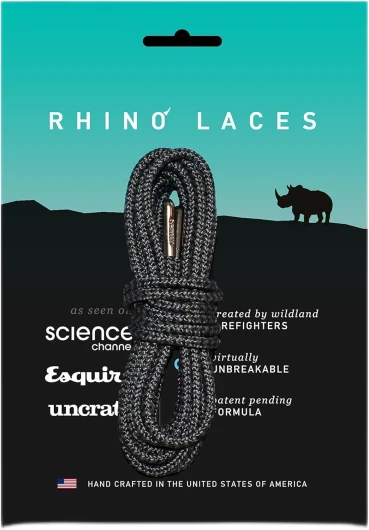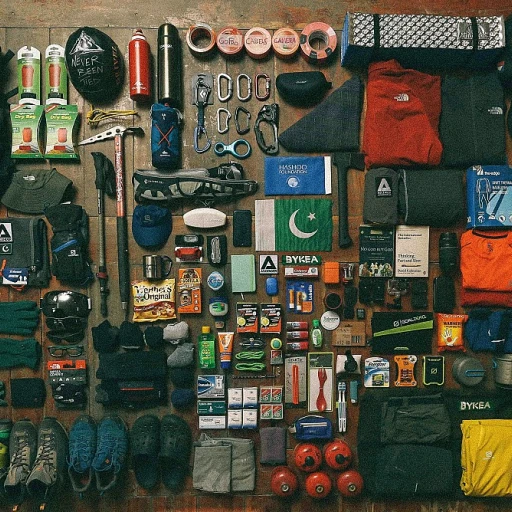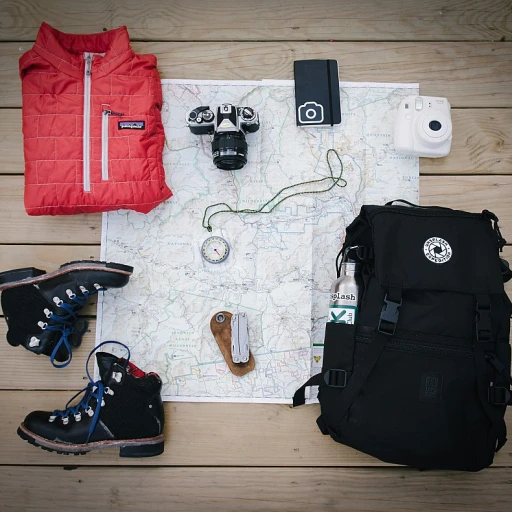
Understanding the Role of Shoe Strings in Hiking Boots
The Unsung Heroes of Hiking Gear
When it comes to hiking boots, the obvious focus usually falls on the boot itself, often overshadowing the real workhorses— the shoe strings. These seemingly simple items are crucial for secure footing and overall comfort on the trail. Indeed, laces act as vital gear that helps maintain the performance of your boots hiking in varied terrains. Consider hiking through rugged landscapes or ascending a craggy mountain path. The strength and reliability of your heavy duty shoe laces can mean the difference between a solid boost and a slip. Just as essential as selecting the right size or the perfect fitting pair of boots, choosing the correct boot lace ensures your boots perform optimally. We often overlook how boot laces function as an integral part of our hiking experience. When tied correctly, they snugly secure your hiking boot ensuring they support your feet, reducing the risk of accidents and enhancing comfort. Different terrains call for varied performance levels, from slippery surfaces to loose rocks. This is when the right laces, tailored to your boot and activity type, come into play as slip-resistant work boots making a difference. In summary, your choice of shoe laces is not just an accessory to the hiking ensemble, but a pivotal factor in your hiking experience. They are the silent partners that help optimize your outdoor performance and, in conjunction, ensure safety and comfort.Materials Matter: Choosing the Right Shoe String Material
Choosing the Perfect Material for Durability and Comfort
When selecting the ideal shoelaces for your hiking boots, one of the most critical factors to consider is the material. Not all laces are created equal, and the right choice can significantly impact the performance and longevity of your boots.
There are several popular materials to choose from, each with its own set of benefits:
- Polyester: A widely used material known for its strength and durability. It works well for both hiking and work boots due to its resistance to wear and tear.
- Nylon: Offers excellent abrasion resistance, making it an outstanding choice for those tackling rugged terrains. Nylon shoelaces are typically long-lasting and perform well in various conditions.
- Cotton: Provides a comfortable and natural feel. While not as durable as synthetic materials, cotton laces offer excellent grip, which can be beneficial in maintaining your boot's snug fit.
- Kevlar: Known for its exceptional toughness, Kevlar is ideal for heavy duty tasks. These laces are highly resistant to fraying and breaking, perfect for extreme hiking conditions.
The choice of material becomes even more crucial if you are considering upgrading or replacing your boot laces, especially in cases where the original pair may have worn out more quickly than expected. Balancing price and quality is essential when selecting the best product for your needs. Remember, the right shoelaces can enhance the performance of your hiking gear, adding value to your price investment while ensuring a secure fit throughout your adventures.
Lacing Techniques for Optimal Performance
Mastering the Art of Lacing Your Hiking Boots
Proper lacing techniques can significantly impact your hiking experience, enhancing comfort and providing better support during your adventures. The way you tie your shoelaces isn't just about tradition or keeping your boots from flapping open; it affects the overall fit of your boots and helps prevent common hiking issues like blisters and hotspots.
There are several popular lacing techniques designed for various scenarios:
- Heel Lock Lacing: Ideal for reducing heel slippage, especially crucial in hiking boots where a secure fit is essential. By wrapping the laces firmly around the boot's ankle hooks, a heel lock provides stability over rocky or uneven terrain.
- Window Lacing: Occasionally, hikers might feel undue pressure on the top of their foot. Window lacing involves creating a gap by skipping an eyelid or two, alleviating pressure without compromising the boot's integrity.
- Surgeon's Knot: This method uses a distinctive knot sequence between hooks, helping to increase the tightness of the laces, making it invaluable for those wearing heavy duty boots or carrying loads over challenging hikes.
Remember, the lace material plays a vital role in how these techniques work. Durable materials like those discussed earlier provide the traction necessary to maintain these knots throughout a long day of trekking.
Choosing round laces or flat laces for your boots can also affect the security and ease of your knots. Round laces tend to provide a more secure lock, while flat laces might offer comfort and versatility.
Lastly, assess the versatility of your hiking gear. The right lacing method is a critical component of an effective hiking setup, ensuring your boots work harmoniously with other equipment for a smoother journey.
Common Problems with Shoe Strings and How to Solve Them
Addressing Common Issues with Shoe Strings
When it comes to hiking boots, shoelaces can often be a source of frustration, even for the most experienced hikers. It's vital to recognize the typical problems that arise and know how to tackle them effectively, ensuring your laces function optimally whether you're in the wilds of the United Kingdom or scaling mountains elsewhere.- Constantly Untying Laces: One of the most frequent complaints involves laces that come undone easily. This isn't just an inconvenience—it can be a safety hazard. To combat this, make sure you're using the right lacing technique. Experimenting with different knots, such as the surgeon's knot or incorporating lock laces, can provide greater security, keeping your laces tied for longer periods.
- Wearing Out & Fraying: If you're using hiking boots regularly, especially in rugged terrains, you'll notice wear and tear on your boot laces. Durable materials are essential—consider heavy-duty fabrics or even reinforced round laces. Investing in high-rated stars products not only ensures longevity but also offers better performance. If budget constraints are present, some price-friendly options can still provide reliability.
- Adjusting for Comfort: Laces that don’t fit right in terms of size or flexibility can make your gear uncomfortable. Using flat laces might help with a snug and comfortable fit, particularly if you find your current pair too loose or stiff. Pay attention to the boot lace length as well, especially for work boots which may require longer, more robust laces.
- Replacement Laces Dilemma: Finding the ideal replacement can be daunting with so many products available. Always consider the specifics: are you replacing laces for a work boot or hiking boot? What material works best for the conditions you'll face? Round boot laces might be the better choice for round eyelets, for instance.
Maintenance Tips for Long-Lasting Shoe Strings
Extend the Life of Your Laces: Simple Maintenance Hacks
Regular maintenance of the laces in your hiking boots, particularly those made of durable materials like heavy duty leather or nylon, is essential for their longevity. By adopting effective maintenance strategies, you can avoid frequent replacements and ensure that your boots hiking adventures are comfortable and hassle-free.- Regular Inspection: Check your shoelaces for wear and tear after each hike. Look for frayed ends, which could lead to quicker deterioration, especially in harsh conditions.
- Proper Cleaning: After each trek, especially in challenging terrains, it's important to clean your laces. Remove them from your boots and gently wash them in warm, soapy water. This is particularly important for those in regions like the United Kingdom, where weather conditions can be extreme.
- Dry Completely: Ensure your laces are thoroughly dry before relacing the boots. Damp laces can lead to fungal growth and compromise lace quality.
- Consider Shoe Lace Protectors: For those investing in high price - rated stars gear, lace protectors can be a game-changer. They shield your shoelaces from sharp rocks or thorns, extending their life.
- Replacement Laces on Hand: Always keep an extra pair of replacement laces in your backpack. Products like the lock laces offer convenience and quick tie—ideal for situations demanding immediate attention.
Innovative Shoe String Designs for Modern Hikers
Revolutionary Shoelace Designs for Today's Hikers
Innovation in hiking boots doesn’t stop at the sole or material used; it extends to shoe laces, a critical component overlooked by many. A growing number of companies are investing in research and development to enhance the performance and durability of shoelaces, precisely because they've recognized their crucial role in a successful hiking experience.- Heavy Duty Lock Laces: Embraced by hikers and work boot users alike, these laces offer a blend of durability and convenience. With a nifty locking mechanism, they ensure that the shoelaces stay fastened throughout any hike, thereby reducing the need to periodically re-tie them, saving time and energy on the trail.
- Customizable Length Options: Recognizing the importance of finding the perfect lace length, some brands offer a variety of options. This flexibility allows hikers to find the best fit for their boots, whether they're dealing with heavy hiking boots or lighter, versatile footwear. Custom lengths also make it easier to replace worn-out laces, ensuring an easy transition to new ones.
- Durable Materials: Companies have also begun to experiment with innovative materials, offering laces from dyneema or kevlar, renowned for exceptional durability and a lightweight feel. Such materials significantly reduce the wear-and-tear seen in traditional boot laces, positioning them as excellent choices for both hiking and work boots.
- Flat vs. Round Laces: The choice between flat and round laces presents hikers with the opportunity to prioritize either durability or ease of use. Round laces tend to stay tight longer, while flat laces often distribute pressure more evenly, contributing to comfort over long distances. Brands now offer hiking products with both designs to cater to diverse needs and preferences.



![Round Boot Laces [1 Pair] Heavy Duty and Durable Shoelaces for Boots, Work Boots & Hiking Shoes 54 inches (137 cm) Blue/Black](https://www.hiking-boots.net/storage/464557/conversions/81696aA7qbL._AC_SL1500_-medium.webp)













